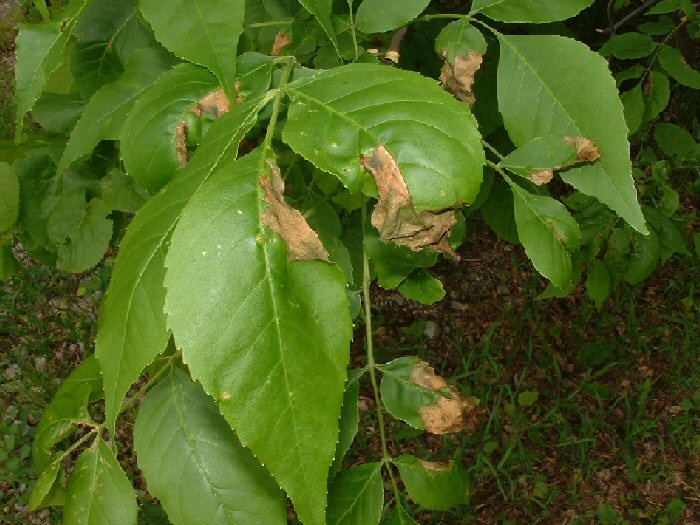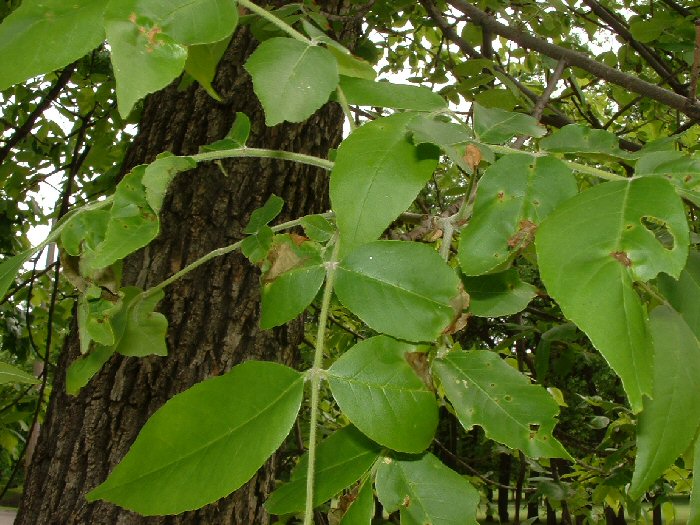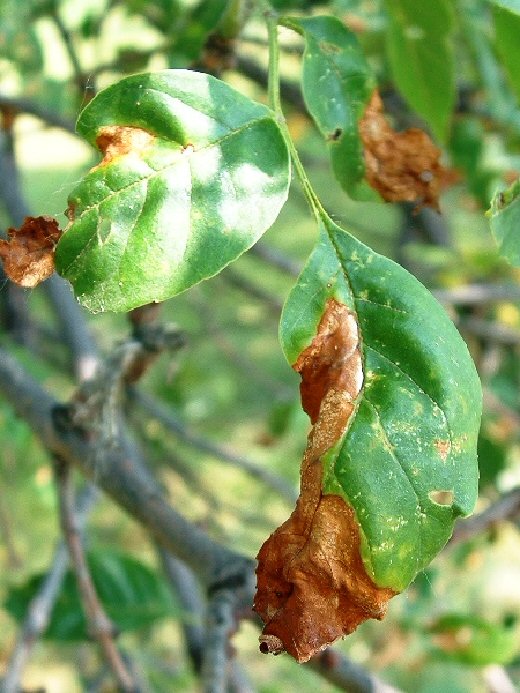Browning Leaves on Ash? Likely Ash Anthracnose
A common sight on green ash (Fraxinus pennsylvanica) and on some Manchurian ash (Fraxinus mandshurica) this time of year is the browning and twisting of leaves attributed to ash anthracnose.

This disease is ash anthracnose (Gnomoniella fraxini), which is common throughout Canada, on species of ash grown in cool areas [Mountain Ash (species of Sorbus) is not a true ash]. While the disease may be unsightly and appears worse when present with ash plant bug damage, it is rarely of great concern. Damage to the tree is usually quite minimal and chemical controls are often not worth while, with the possible exception of the production of young nursery plants or the establishment of ash shelterbelts.
Leaf infections result in the formation of large blotches, and distorted and tan gray areas. Lesions appear in the spring on expanding shoots and leaves as water-soaked spots. The damage can be comparable to frost damage in both time that it takes symptoms to develop and the superficial appearance. Severe infections may result in defoliation. Extensive defoliation year after year can lead to dieback on green ash. Distorted leaves develop due to the stress of healthy expanding tissue near non-expanding dry lesions. Lesions on expanded leaves are often associated with insect feeding injuries.


This pathogen is restricted to ash trees. It is not responsible for other anthracnose diseases in beans, peas, etc. The fungus can survive through winters in twigs, petioles (leaf stems), leaf veins and seeds. Petioles infected with the fungus can remain on the leaf throughout the winter and can be a source of new infections the next season to nearby susceptible shoots that emerge in the spring, when splashing rainfalls begin. All succulent plant tissue can be infected by the pathogen.
The pathogen can survive on fallen plant material, leaves and twigs, and could potentially initiate a disease outbreak on the lower parts of the plant. Thus, removal of fallen leaves can help to minimize damage and is a recommended management strategy, especially in nursery production.
Fraxinus pennsylvanica and its cultivars tend to be very susceptible, though varieties do vary in the degree of susceptibility. Fraxinus manshurica (Manchurian ash) is considered less susceptible than green ash.
Chemical control is not usually worthwhile but products with the active ingredient mancozeb are registered for commercial purposes.
Recommended cultural practices include removal of cankered branches and pruning of trees to allow for good air circulation to speed up drying of foliage. Promote vigourous growth of the tree through proper fertilization.
References:
Sinclair, W.A. and Lyon, H.H. Diseases of Trees and Shrubs. 2nd ed. Ithaca: Cornell University Press.
For further information, contact your GO representative.

